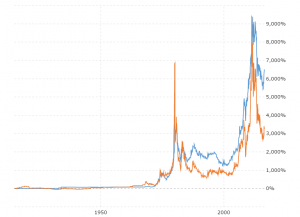Pieces of Eight – the First International Currency
I don’t know about you, but for me the words, ‘pieces of eight’, immediately conjure up images of pirates, preferably with a sword in their teeth and a parrot on their shoulder, treasure maps, and buried chests of bullion. But there is a more serious history to this coin, more formally known as the Spanish dollar. It was the first international currency, recognized and accepted around the world from the 16th to the 19th centuries. Today the US dollar is the closest we have to an international currency, although the euro, pound sterling and Chinese yuan are contenders too. In simpler times all you needed was a sack of pieces of eight and you were set for a voyage around the world.
In 1497 Spain went through a monetary reform. King Ferdinand II and Queen Isabella had control of all the Spanish settlements in South America, after the conquest by the conquistadors, and they standardized the currency, establishing the real as the basic unit. The real de a ocho was a silver coin 1½ inches in diameter, worth eight reales. Thus it was literally ‘a piece of eight (units)’. In 1537 the gold escudo was introduced, worth 16 reales. The gold Doubloon, a later coin, was worth two escudos, or 32 reales. Counting on fingers, without using thumbs, must have been popular in those times!
Because of its quality and uniformity it was trusted around the world, and it was used for trade transactions. Some countries stamped it and made it their local currency. Chinese merchants assayed it and added characters we call ‘chop marks’, to verify its value. So widely used was it that when America became independent, abandoning the British pound, this Spanish dollar became the basis for the American dollar. Indeed, it was legal tender right up until 1857, when the Coinage Act made all foreign currencies illegal, and they had to be exchanged for American dollars.
Many other currencies, from the Philippines peso to the Chinese yuan and the Japanese yen, as well as the Canadian dollar, were all based on that first Spanish dollar. Even our symbol for the dollar – $ – represents common elements in the decoration of the Spanish dollar. The name, ‘peso’, which is seen in so many South American currencies, is derived from the word ‘pieza’, meaning a piece.
Millions of Spanish dollars were minted, mostly in South America, at first from silver looted from the native peoples – Incas, Mayans, and other conquered cultures. Then the Spanish established mines in countries like Bolivia, and between 1500 and 1800, 100,000 metric tons of silver were extracted. At first the mines were dug by enslaved Indians, but they had no immunity to European diseases like smallpox, and many thousands of them died. African slaves were brought over to replace them, and the working conditions were so bad that most died within six or eight years. Some did manage to buy their freedom, and remained in South America, with many in Brazil. The wealth of Europe and the Industrial Revolution was financed with this silver.
It was the shipments of these dollars across the Atlantic to Europe, and also to North America and Asia, that attracted the pirates we now associate with the term, ‘pieces of eight’. A colourful coin indeed, and one that is the roots of most of our world currencies today.
















